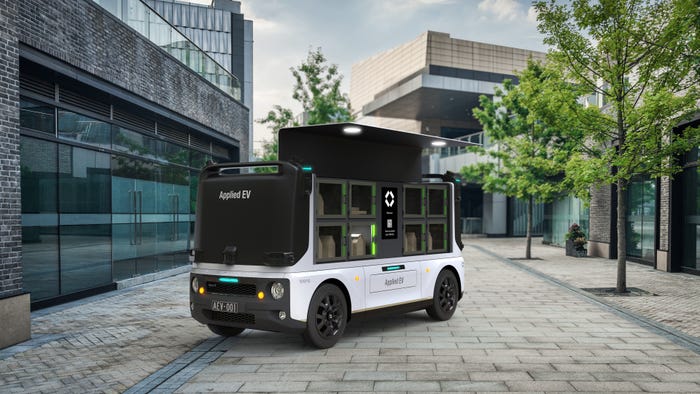Warehouse Automation Trends See Steady Growth in 2023 and Beyond
Warehouse automation technologies are seeing a boom, though companies are still adapting to the changing production landscape

Warehouse automation has seen significant growth over the past year, with companies increasingly investing in technologies to create smart, connected industrial sites.
A Research and Markets report found the market grew from $17.32 billion in 2022 to $19.78 billion in 2023 and predicts it will continue to boom over the next few years and is estimated to reach $33.59 billion by 2027.
Jessica Nian, lead analyst for manufacturing technology at Omdia said the development of warehouse automation has entered a stage of “steady growth” set to continue in 2023.
“One of the major drivers for the increase in the warehouse automation market is the booming development of the retail and manufacturing industries,” she said, “[Resulting in the] need for fast and efficient order fulfillment.”
While this is a recent boom, with companies still grappling with challenges such as internal resistance, high costs and a skills shortage, the popularity of e-commerce – catalyzed by the pandemic but continuing beyond its end – and ongoing labor shortages is accelerating the pace of change.
Companies around the world are steadily turning to automation solutions to improve productivity and efficiency, with robots emerging as a leading tool.
The Rise of Robotic Systems
“If you look at the warehouse automation landscape, most of the new entrants to the automation market are robotic companies,” said Arthur Bellamy, CRO of warehouse automation company Exotec. “Protracted labor shortages, inflationary pressures and unpredictable consumer demand means businesses are looking to automation systems that can grow and flex with their business.
“This is why we’re increasingly seeing the market shift from traditional automation to more nimble robotic solutions.”
The move to more flexible and versatile robotic systems is also motivated by the fact that supply chain needs have changed, with the pandemic proving the rigidity of traditional systems can lead to a domino effect collapse if one element falls.
“Today’s supply chains need to become a lot more agile while maintaining a high level of efficiency,” said Bellamy. “Traditionally, warehouse automation focused on efficiency as opposed to agility … the reality is that supply chains are changing daily – disruption has really become our new normal … but robotics can help to alleviate so much of that pressure when change inevitably does come around for retailers and businesses.”
The pandemic also sparked a shift toward e-commerce that companies are still adapting to, with the online retail industry seeing a boom as a result of this shift.
According to Nian, the most popular automation equipment rising to meet this need includes automatic picking machinery, packaging systems, AGV/AMR and automated warehousing systems.
Adapting to Big Data
The shift to online systems has led to a rise in the amount of data companies generate. This, in turn, has led to warehouses facing novel data processing problems and is driving a blossoming need for data analysis technologies.
“With the development of technologies such as big data, artificial intelligence (AI) and machine learning, digitalization and visualization technologies are becoming the solutions for companies to meet their data challenges,” said Nian. “The warehouse is gradually using predictive and normative analysis to process data, establishing business models to output optimization suggestions, guiding business decisions with data results, and improving warehouse operation efficiency.
“For example, using machine learning and AI to classify, evaluate and extract useful insights, such as predicting peak season demand, detecting and avoiding performance bottlenecks, and optimizing organizational decisions.”
Data warehouse automation is being used to automate repetitive and often labor-intensive tasks such as data transfers, asset testing and modeling, as well as documentation and reporting tasks.
As an increasing number of processes are automated to streamline warehouse efficiencies, data processing capacities will necessarily have to expand. Currently, the creation of these data processing systems is still catching up to demands and consistent investment and innovation in this sector is needed for companies to ensure operational efficiency.
Global Trends
Despite the rising popularity of warehouse automation solutions, Bellamy said there are an estimated 80% of global warehouses without any automation, with change happening only in recent years.
“All markets have a long way to go to bring their logistics operations into the 21st century,” said Bellamy.
Similarly, the ResearchandMarkets report found that since the last decade, only around 15% of warehouses are being mechanized, “while only 5% are using sophisticated automation equipment and solutions.”
A new study from ProGlove, which looked at 1,000 managers, directors and warehouse workers across the U.S., U.K. and Europe, found only a little more than a third (36.1%) are currently deploying warehouse automation technology and less than half (45.6%) see automation as necessary over the next five years.
“For many organizations, automation will be a necessary step to improve productivity, but it is not a silver bullet,” said Stefan Lampa, ProGlove’s CEO. “In any case, it must be implemented to address the specific needs of each individual business, rather than automation for its own sake.”
However, as global markets continue to respond to labor shortages and technologies become increasingly accessible, adoption rates are anticipated to change. Many see it as offering significant market opportunities for companies in the warehousing automation ecosystem, provided they make the most of the changing landscape.
“The quantity and quality of new warehouse technologies continues to increase. Warehouses, therefore, have to prepare themselves for the automated future of warehouse operations,” ProGlove said in its report.
Obstacles to Automation Uptake
Despite its bumper year, challenges remain to warehouse automation solutions seeing widespread deployment.
According to the ProGlove study, 28.3% of companies surveyed identified a lack of automation expertise to carry out projects, while almost a quarter (24.5%) highlighted integration difficulties in their current warehouse environment.
In addition, 22% said they struggle with internal resistance, 21% said support and maintenance are insurmountable issues and 22% don’t have time to train people. Finally, 18% claim automation is too complicated to implement across the business. In total, only a fifth of respondents said they had no organizational barriers to automation implementation.
Another leading obstacle, according to Bellamy, is cost.
“There’s a significant pressure to maximize profits in a challenging economic environment, so cost is often a key consideration,” said Bellamy. “Some companies considering warehouse automation focus on the price tag of new technologies in the short term and either invest in low-tech band-aid solutions or don’t invest at all.
“In doing so they often fail to realize that these automation tools are a necessary cost-effective investment needed to evolve their logistics operations to meet complex consumer demand and expectations and remain competitive in the long term.”
Companies spending big on warehouse automation tools include Walmart and Amazon, with the latter investing $1 billion in warehouse robotics in 2022 as part of its venture investment program, the Amazon Industrial Innovation Fund (AIIF), which will be used to “spur supply chain, fulfillment and logistics innovation.”
According to Bellamy, other companies should follow suit or risk falling behind.
“The more other retailers wait to react, the more their competitive disadvantage will grow,” said Bellamy. “Logistics managers and other key business decision-makers stand at a pivotal time in the industry where these automation decisions can no longer be pushed back.
“Manual operations just can’t reach the level of throughput required and the standard approach of ‘throwing people’ at the problem is no longer feasible as the population grows older and labor availability, especially for physically tolling jobs, continues to decline.”
According to ProGlove, however, change has to be consistent with businesses’ expectations and requirements, or risk being abandoned altogether.
“As costs rise, vacancies remain open, and customer expectations develop, modern problems require technological solutions,” the company said. “On the other hand, those solutions need to be accessible and easily understood by both managers and on-the-floor workers alike. Otherwise, no matter how cutting-edge the technology is, it will remain unused.”
About the Author
You May Also Like








